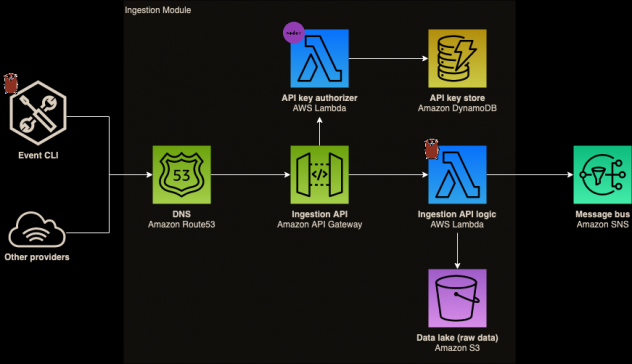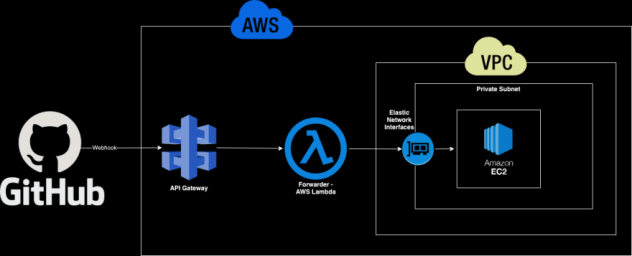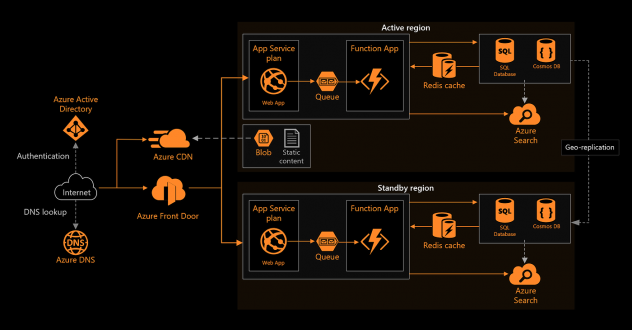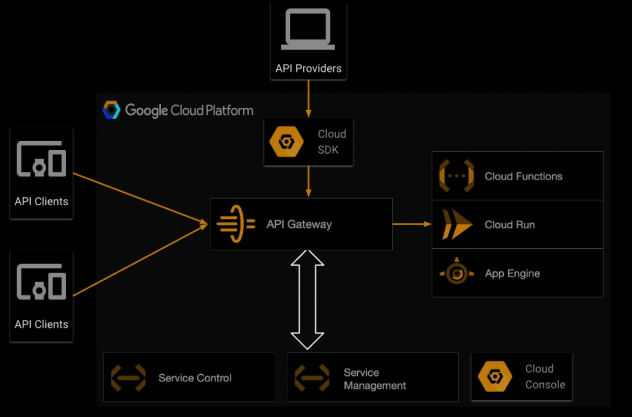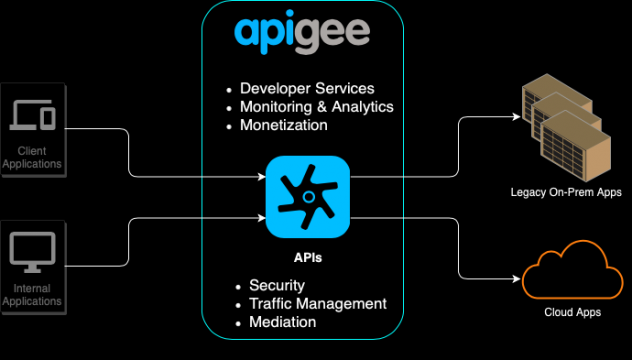overview
In this article, we will expose the importance of centralizing access to microservices through the use of an API gateway. Centralized access involves utilizing a central component that acts as a gateway for accessing microservices instead of directly interacting with individual microservices and endpoints. The API gateway pattern represents this centralized access component.
Microservices architecture promotes the creation of modular and decoupled software with independently deployable and changeable components. However, these advantages come with inherent complexities that can be addressed by implementing centralized access through an API gateway.
Distributed Functionality
One complexity arises from the distributed nature of functionality within the system. In a monolithic architecture, a single API call could update order records and stock records through different endpoints. With microservices, the same action may require multiple API calls to various endpoints. For example, when placing an order in an e-commerce system, separate API calls may be needed to create an order record and update stock levels. Keeping track of the different locations of these distributed functionalities becomes essential.
Distributed Data
Additionally, data is also distributed across the microservices architecture. Each microservice has its own smaller scope and micro-database containing relevant data. This introduces the challenge of locating and extracting the required data from multiple microservices, compared to the simpler approach of a single monolithic API or database.
Distributed Security
Security is another area affected by microservices. In a monolith, client applications authenticate once with a single API. In microservices, authentication needs to be performed for each individual API accessed, as the security is distributed across the architecture. If multiple APIs are involved, each one requires authentication and authorization. This distributed security model adds complexity for client applications.
GENERAL COMPLEXITIES
Client applications consuming microservices face the burden of managing and maintaining these inherited complexities. They need to remember different APIs for various data pieces and functionalities, and consolidate the data and functionality retrieved from multiple APIs. Additionally, the client application must handle authentication details for each microservice API it accesses. This involves configuration and multiple round trips for acquiring authentication tokens.
While internal client applications may tolerate these complexities, passing them on to customers, third parties, or partners who use the APIs as a product will negatively impact their experience. Managing the distributed complexities of a system becomes challenging and devalues the product.
To address these challenges, centralized access to microservices is crucial. Centralizing access to microservices through an API gateway provides several benefits. It simplifies the management of distributed functionalities, consolidates data retrieval from multiple microservices, and streamlines the authentication and authorization process. By reducing complexity and providing a unified interface, centralized access enhances the overall customer experience and adds value to the product.
Main Benefits
Centralized access to the microservices architecture offers several advantages:
- Simplified Client Application Development: With a centralized access point like an API gateway, client applications no longer need to manage and remember multiple endpoints for different functionalities. They can interact with the API gateway, which handles the communication with the underlying microservices. This simplifies the development process and reduces the cognitive load on the client application.
- Improved Performance: By consolidating the communication and data retrieval through a centralized API gateway, the number of network requests and round trips can be minimized. This optimization can lead to improved performance and reduced latency in retrieving data or utilizing functionality from multiple microservices.
- Enhanced Security and Governance: Centralizing access through an API gateway allows for unified security measures and governance. Instead of managing security credentials and authentication for each individual microservice, the API gateway can handle authentication and authorization in a consistent manner. It provides a centralized point for implementing security policies, logging, and monitoring, making it easier to enforce security standards across the system.
- Simplified Upgrades and Versioning: Introducing changes or updates to the microservices architecture becomes more manageable with a centralized API gateway. Upgrading or introducing new versions of microservices can be done without requiring modifications to the client applications. The API gateway can handle compatibility and versioning, ensuring smooth transitions and minimizing disruptions.
Despite the benefits, there are a few considerations and challeges to keep in mind:
- Single Point of Failure: Centralizing access through an API gateway introduces a single point of failure. If the API gateway experiences downtime or malfunctions, it can disrupt access to all the microservices. Implementing redundancy, failover mechanisms, and load balancing becomes crucial to mitigate this risk.
- Increased Complexity in the API Gateway: The API gateway becomes a critical component responsible for routing requests, managing security, and aggregating data from multiple microservices. It requires careful design, implementation, and maintenance to handle the complexity and ensure scalability, performance, and reliability.
- Potential Performance Bottleneck: In certain scenarios with high traffic or complex data aggregation, the API gateway can become a performance bottleneck. Careful monitoring, optimization, and scaling strategies should be take to handle increasing loads and maintain system responsiveness.
So, centralizing access to microservices through an API gateway offers significant benefits in terms of simplified development, improved performance, enhanced security, and streamlined governance. However, it also requires thoughtful planning, robust implementation, and ongoing maintenance to address potential challenges and ensure a reliable and scalable architecture.
api gateway
The API Gateway acts as the central point through which external customers access our microservices. It plays a crucial role in the architecture
One of the primary responsibilities of the API Gateway is to authenticate all incoming connections. It accomplishes this by communicating with an authentication server to validate the incoming traffic. By taking on this security responsibility, the API Gateway ensures that all upstream APIs, which operate in the background, are shielded from potential security risks. In our internal network, the API Gateway resides within the DMZ (Demilitarized Zone), an area designated for external-facing components that may receive traffic from untrusted sources, such as the Internet. Placing the API Gateway within the DMZ simplifies the architecture, as we only need to focus on securing the API Gateway itself.
In general an API Gateway solution provides the following :
- The API Gateway acts as a central point for external customers accessing microservices.
- It authenticates incoming connections and communicates with an authentication server.
- The API Gateway is placed in the DMZ, an area for external-facing components.
- It provides security by shielding upstream APIs and handling authentication.
- The API Gateway controls traffic flow and can perform IP filtering.
- It offers load balancing functionality to distribute traffic across multiple instances.
- The API Gateway serves as the central logging server for all incoming traffic.
- It can transform responses between different formats (e.g., XML to JSON).
- The API Gateway can cache certain results to improve performance.
- It facilitates service discovery and registration for new API instances.
- The API Gateway supports version management of background APIs.
- It enables gradual traffic migration between different API versions.
- The API Gateway assists in breaking down monolithic APIs into smaller ones.
- It provides centralized access and offers numerous benefits to microservices architecture.
Let´s take a brief look to some api gateway cloud flavours for AWS, Azure and GCP
Cloud Flavours
AWS API Gateway
AWS API Gateway is a fully managed service provided by Amazon Web Services (AWS) that allows developers to create, publish, and manage APIs (Application Programming Interfaces) for their applications. It acts as a front-end interface for APIs, enabling you to build secure and scalable API endpoints with various features and functionalities.
AWS API Gateway offers the following key capabilities:
- API Creation and Management: API Gateway allows you to create and define RESTful APIs or WebSocket APIs. You can specify endpoints, methods, request/response models, and configure API settings such as authentication, throttling, and caching.
- API Deployment: Once you have defined your APIs, API Gateway allows you to easily deploy them to different stages (e.g., development, testing, production) using API Gateway stages. This simplifies the process of managing API versions and deploying updates.
- Integration with Backend Services: API Gateway enables seamless integration with various AWS services, including AWS Lambda, AWS Elastic Beanstalk, Amazon EC2, and more. It also supports integration with third-party HTTP endpoints, allowing you to connect your APIs to existing backend systems.
- Authentication and Authorization: API Gateway provides built-in support for authentication and authorization mechanisms. You can configure API Gateway to handle API key-based access, AWS Identity and Access Management (IAM) roles, or integrate with external identity providers such as Cognito or OAuth providers.
- Request and Response Transformation: API Gateway allows you to modify the structure or content of the requests and responses passing through the gateway. You can define mapping templates using Velocity Template Language (VTL) to transform or validate the data before forwarding it to the backend services or returning the response to the client.
- Traffic Control and Throttling: API Gateway provides control over the traffic flowing through your APIs. You can set throttling limits to control the number of requests per second or per minute, preventing abuse and ensuring fair usage. It also supports caching of responses to improve performance and reduce backend load.
- Monitoring and Logging: API Gateway integrates with AWS CloudWatch, enabling you to monitor and log API Gateway-specific metrics, including request/response rates, latencies, error rates, and more. You can set up alarms and leverage the data to gain insights into the performance and usage of your APIs.
- Developer Portal: API Gateway includes a customizable developer portal that serves as a self-service platform for developers to discover, explore, and test your APIs. It allows you to provide documentation, SDKs, code samples, and interactive tools to facilitate API consumption.
AWS API Gateway works seamlessly with other AWS services and can be integrated with services like AWS Lambda for serverless compute, Amazon S3 for file storage, and AWS Step Functions for orchestrating complex workflows.
By using AWS API Gateway, you can easily create and manage APIs, handle authentication and authorization, control traffic, and gain visibility into API usage, ultimately enabling you to build scalable and secure APIs for your applications.
Azure Front Door
Azure Front Door is a cloud-based service provided by Microsoft Azure that acts as a global entry point for web applications and APIs. It offers a range of features and functionalities to improve the performance, availability, and security of applications deployed on Azure or on-premises.
Azure Front Door functions as a content delivery network (CDN) and an application gateway, combining the benefits of both to optimize the delivery of web content and provide intelligent traffic routing.
Some key features of Azure Front Door include:
- Global Load Balancing: Front Door uses global load balancing algorithms to distribute incoming traffic across multiple backend instances deployed in different regions. This helps to ensure low latency and high availability for users across the globe.
- Traffic Routing and Path-Based Routing: It supports flexible traffic routing configurations, allowing you to define rules based on the path, hostname, or HTTP headers of the incoming requests. This enables you to route traffic to specific backend pools or services based on different criteria.
- SSL/TLS Termination: Azure Front Door can handle SSL/TLS encryption and decryption, offloading the SSL/TLS processing from your backend servers. This improves the performance and reduces the computational load on your applications.
- Web Application Firewall (WAF): Front Door includes built-in Web Application Firewall capabilities to protect your applications against common web vulnerabilities and attacks. It can help mitigate threats such as SQL injection, cross-site scripting (XSS), and more.
- Caching and Content Delivery Network: It leverages Azure CDN to cache static and dynamic content closer to the end-users, reducing latency and improving the overall performance of your web applications. Cached content can be served from the nearest edge location for faster delivery.
- Health Monitoring and Analytics: Azure Front Door provides real-time monitoring and analytics to gain insights into the health and performance of your applications. You can track metrics such as request/response rates, latency, errors, and more to diagnose and optimize your application delivery.
- Custom Domain and SSL Certificate Management: Front Door allows you to configure custom domain names for your applications and manage SSL certificates easily. This simplifies the setup and management of secure connections for your applications.
Azure Front Door integrates well with other Azure services, such as Azure Application Gateway, Azure Load Balancer, and Azure Traffic Manager, providing a comprehensive solution for global application delivery and traffic management.
In general, Azure Front Door helps improve the performance, scalability, and security of your web applications by optimizing content delivery, load balancing traffic, and providing advanced routing and security features which means a more versatile tool that Azure APi Management
GCP API Gateway
Google Cloud API Gateway is a fully managed service provided by Google Cloud Platform (GCP) that enables developers to create, deploy, and manage secure APIs (Application Programming Interfaces) for their applications. It acts as a front-end interface for APIs, allowing you to control access, usage, and security for your API endpoints.
The API Gateway serves as a central entry point for all incoming API requests, providing a layer of abstraction between the clients and your backend services.
It offers several key features and functionalities, including:
- API Management: API Gateway allows you to define, publish, and manage APIs easily. You can specify the API endpoints, configure authentication and authorization mechanisms, set up rate limiting, and apply transformations or transformations to the requests and responses.
- Security and Authentication: You can enforce authentication and authorization policies to ensure that only authorized clients can access your APIs. API Gateway supports various authentication methods, including API keys, JSON Web Tokens (JWT), and OAuth 2.0.
- Rate Limiting and Quotas: API Gateway enables you to control the rate at which clients can access your APIs. You can set limits on the number of requests per minute or hour, preventing abuse and ensuring fair usage.
- Request and Response Transformation: It allows you to modify the structure or content of the requests and responses passing through the API Gateway. This feature is useful for data mapping, protocol translation, payload validation, or response formatting.
- Monitoring and Analytics: API Gateway provides logging and monitoring capabilities, allowing you to track and analyze the usage of your APIs. You can monitor traffic, latency, error rates, and other metrics to gain insights into the performance and health of your API ecosystem.
- Developer Portal: API Gateway includes a developer portal that serves as a self-service platform for developers to explore, learn, and consume your APIs. It provides documentation, code samples, and interactive tools to assist developers in integrating with your APIs.
Apigee API Platform: Apigee
Apigee, now a part of Google Cloud, offers a comprehensive API management platform. It includes features like API design, security, traffic management, analytics, developer portal, and monetization options.
Apigee is an API management platform that enables organizations to design, secure, deploy, and monitor APIs (Application Programming Interfaces). It provides a comprehensive set of tools and services to help businesses build and manage APIs effectively.
Apigee offers the following key features and capabilities:
- API Design: Apigee allows developers to design APIs using a graphical interface or by defining specifications using popular API definition languages like Swagger (OpenAPI). It provides tools to define API endpoints, methods, request/response models, and authentication mechanisms.
- Security and Authentication: Apigee provides robust security features to protect APIs and enforce access control. It supports various authentication methods, including API keys, OAuth, and JSON Web Tokens (JWT). It also offers capabilities for rate limiting, IP filtering, and threat protection to secure APIs against attacks.
- API Publishing and Developer Portal: Apigee includes a developer portal that serves as a self-service platform for developers to discover, explore, and consume APIs. Organizations can customize the portal, publish API documentation, provide code samples, and manage developer access to APIs.
- API Gateway: Apigee acts as an API gateway, serving as a single entry point for all API requests. It handles routing, request/response transformations, caching, and traffic management. The gateway provides high scalability, availability, and fault tolerance for API traffic.
- Analytics and Monitoring: Apigee offers comprehensive analytics and monitoring capabilities for APIs. It tracks and provides insights into API usage, performance metrics, error rates, and developer engagement. This data helps organizations optimize their APIs and identify areas for improvement.
- Developer Engagement and Monetization: Apigee provides features to engage developers and monetize APIs. It supports developer onboarding, API documentation, and community forums. Additionally, it offers capabilities for API product management, billing, and usage-based monetization.
- Integration and Extensibility: Apigee integrates with various backend systems and technologies. It can connect to legacy systems, cloud services, databases, and other APIs. Apigee also provides extensibility options through custom policies, allowing organizations to add custom logic to API flows.
Apigee is available as a cloud-based platform, offering ease of deployment, scalability, and managed infrastructure. It can also be deployed in hybrid or multi-cloud environments for organizations with specific deployment requirements.
That´s all for today, happy building !
